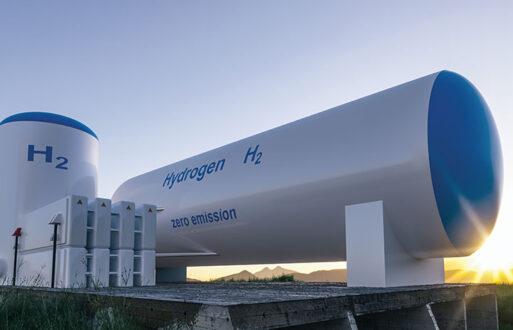Disclaimer: This blog post, which answers “What is the difference between imbalance reserve products and regulation reserves in ISO/RTO markets?,” was generated using PCI’s ISO/RTO Documentation AI Chatbot, powered by ChatGPT. While the content is based on curated market documentation, it is intended for informational purposes only and may not reflect the most up-to-date or comprehensive information. We recommend verifying any key details directly with relevant sources before making business decisions.
For the latest answer to this question, generated live, visit our free ISO/RTO Documentation Chatbot.
Grid reliability is the backbone of any energy market, and ISO/RTO markets like CAISO, MISO, and EDAM rely on a variety of tools to keep the lights on. Two critical tools in this arsenal are imbalance reserve products and regulation reserves. While they may sound similar, they serve distinct purposes, are procured differently, and play unique roles in maintaining a stable and reliable grid.
In this blog post, we’ll explore the differences between these two reserve types, how they’re used to manage grid reliability, and why they’re essential in market operations like EDAM and Markets+. By the end, you’ll have a clear understanding of how these reserves work together to ensure a resilient energy system.
ISO/RTO Documentation Chatbot
Use our AI to search Business Practice Manuals from ISO/RTO markets at no cost.
What are imbalance reserve products?
Imbalance reserve products are designed to address the uncertainty and variability that arise between the day-ahead market and real-time operations. Think of them as a safety net for unexpected changes in net load — whether it’s a sudden drop in wind generation or a spike in demand due to extreme weather.
In markets like EDAM, imbalance reserves are procured to ensure that each Balancing Authority Area (BAA) has enough flexible capacity to meet its upward and downward uncertainty requirements. These reserves are biddable products, meaning market participants can offer their resources to provide imbalance reserves, as long as those resources are dispatchable on a 15-minute basis.
Once awarded, these resources come with a must-offer obligation to provide economic energy bids in the real-time market. The procurement process respects transmission constraints to ensure deliverability, and the requirements are based on historical forecast deviations between day-ahead and real-time markets. This ensures that the grid has the capacity to handle unexpected changes without compromising reliability.
What are regulation reserves?
Regulation reserves, on the other hand, are all about maintaining balance in real-time. These reserves respond to Automatic Generation Control (AGC) signals to correct short-term imbalances between supply and demand. Unlike imbalance reserves, which address forecast uncertainty over a longer horizon, regulation reserves operate on a much faster timescale — often within seconds to minutes.
There are two types of regulation reserves: upward and downward. Upward regulation reserves increase output when there’s a shortfall, while downward regulation reserves decrease output when there’s an excess. These reserves are critical for maintaining system frequency and ensuring that the grid operates within its technical limits.
Regulation reserves are procured in both day-ahead and real-time markets, often through co-optimization with energy and other ancillary services. This ensures that the most cost-effective resources are selected to provide the necessary flexibility.
Why both are essential for grid reliability
Imbalance reserve products and regulation reserves might seem like they overlap, but they’re complementary tools that address different aspects of grid reliability.
Imbalance reserves are like a buffer for the unexpected. They ensure that the grid has enough capacity to handle forecast deviations, reducing the risk of reliability events between day-ahead and real-time operations. For example, in EDAM, these reserves allow BAAs to share the collective risk of uncertainty across a larger geographic footprint, making the system more resilient.
Regulation reserves, on the other hand, are the fine-tuning mechanism. They keep the grid balanced in real-time, responding to minute-by-minute changes in supply and demand. Without regulation reserves, the grid would struggle to maintain frequency stability, leading to potential blackouts or equipment damage.
How EDAM and Markets+ leverage these reserves
In market operations like EDAM and Markets+, both imbalance reserve products and regulation reserves play pivotal roles. EDAM, for instance, uses imbalance reserves to enhance reliability by ensuring that each BAA has sufficient capacity to meet its uncertainty requirements. This is particularly important in a geographically diverse market, where sharing resources can lead to significant cost savings and improved reliability.
Markets+ also emphasizes the importance of regulation reserves, especially in real-time operations. By co-optimizing these reserves with energy and other ancillary services, Markets+ ensures that the grid remains balanced and reliable, even during periods of high demand or unexpected outages.
The big picture: Why these reserves matter
Imbalance reserve products and regulation reserves are the unsung heroes of grid reliability. They address different challenges — one focusing on forecast uncertainty and the other on real-time balance — but together, they create a robust framework for maintaining a stable and reliable energy system.
As markets like EDAM and Markets+ continue to evolve, the importance of these reserves will only grow. By understanding how they work and why they’re essential, we can better appreciate the complexity and ingenuity of modern energy markets.
For the latest answer to this question, generated live, visit our free ISO/RTO Documentation Chatbot.







